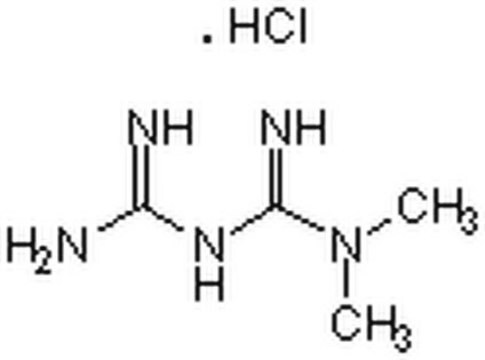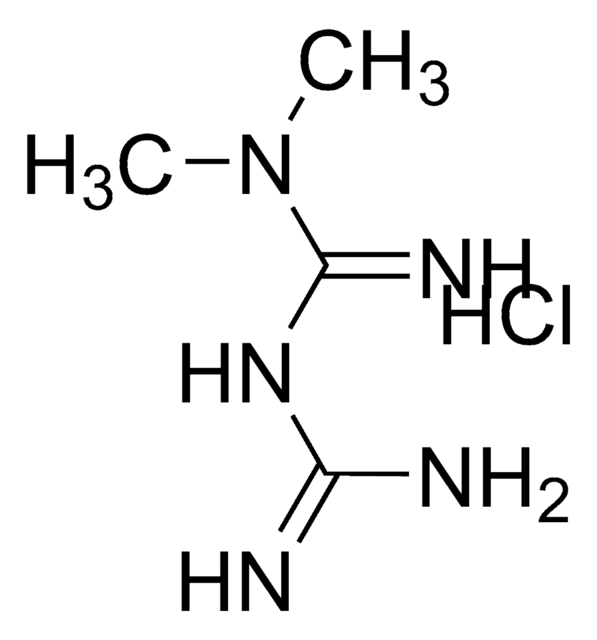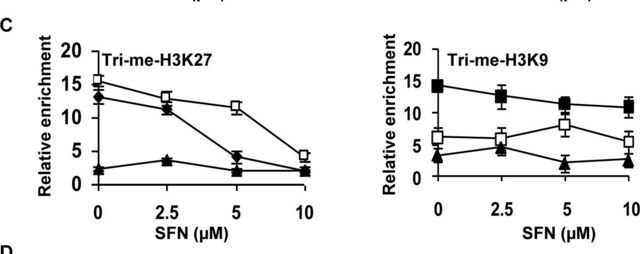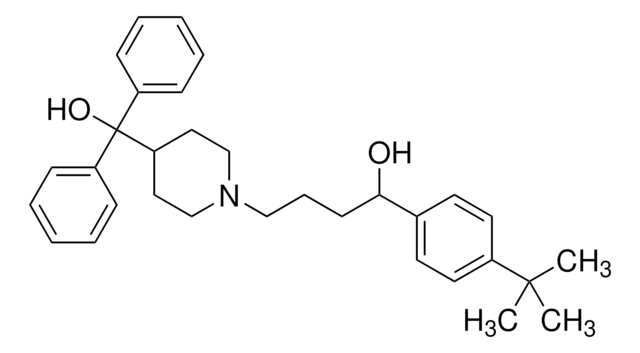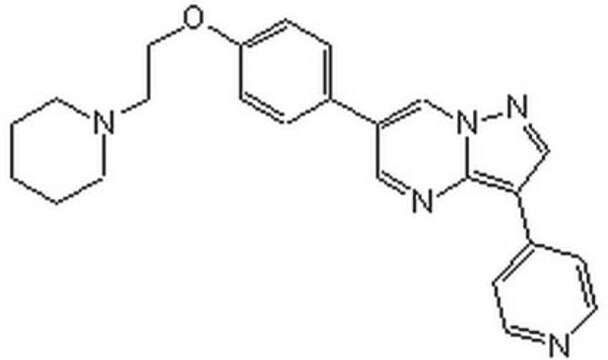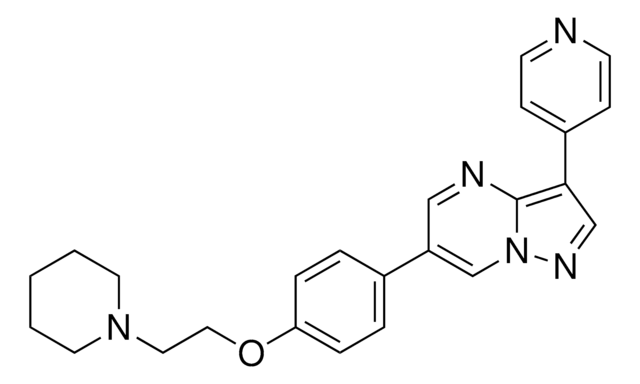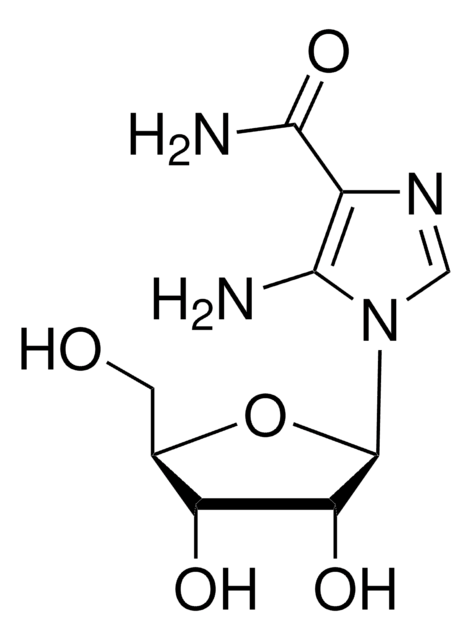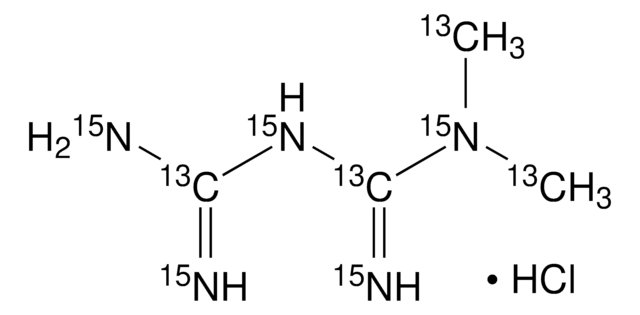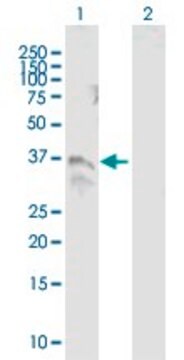D150959
1,1-Dimetilbiguanida hydrochloride
97%
Sinónimos:
Metformina
About This Item
Productos recomendados
Nivel de calidad
Ensayo
97%
Formulario
crystals
mp
223-226 °C (lit.)
cadena SMILES
Cl[H].CN(C)C(=N)NC(N)=N
InChI
1S/C4H11N5.ClH/c1-9(2)4(7)8-3(5)6;/h1-2H3,(H5,5,6,7,8);1H
Clave InChI
OETHQSJEHLVLGH-UHFFFAOYSA-N
Información sobre el gen
¿Está buscando productos similares? Visita Guía de comparación de productos
Descripción general
Metformin is used as an organic base catalyst for the transesterification of coconut oil with methanol.
Aplicación
- bis(1,1-dimethylbiguanido)copper(II) octahydrate
- bis(1,1-dimethylbiguanido)nickel(II)
- 1,1-dimethylbiguanidium tetrabromothallate(III)
Acciones bioquímicas o fisiológicas
Palabra de señalización
Warning
Frases de peligro
Consejos de prudencia
Clasificaciones de peligro
Acute Tox. 4 Oral - Eye Irrit. 2
Código de clase de almacenamiento
11 - Combustible Solids
Clase de riesgo para el agua (WGK)
WGK 1
Punto de inflamabilidad (°F)
Not applicable
Punto de inflamabilidad (°C)
Not applicable
Equipo de protección personal
dust mask type N95 (US), Eyeshields, Gloves
Elija entre una de las versiones más recientes:
¿Ya tiene este producto?
Encuentre la documentación para los productos que ha comprado recientemente en la Biblioteca de documentos.
Los clientes también vieron
Artículos
Glucose metabolism is regulated by the opposing actions of insulin and glucagon. Insulin is released from pancreatic ß cells in response to high blood glucose levels and regulates glucose metabolism through its actions on muscle, liver, and adipose tissue.
We present an article about how proliferating cells require the biosynthesis of structural components for biomass production and for genomic replication.
Nuestro equipo de científicos tiene experiencia en todas las áreas de investigación: Ciencias de la vida, Ciencia de los materiales, Síntesis química, Cromatografía, Analítica y muchas otras.
Póngase en contacto con el Servicio técnico
